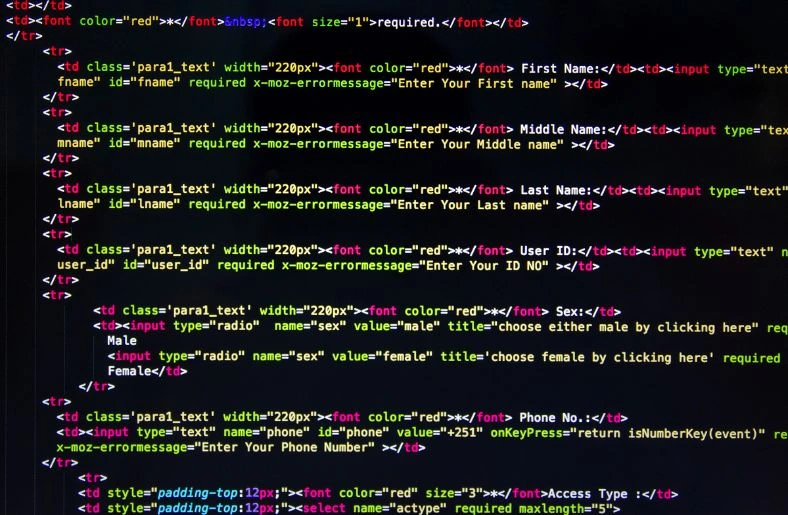Tired of hearing that interactive HTML WYSIWYG editors are just for beginners? Or maybe you’re stuck in the old-school way of doing things with traditional coding. Here’s the truth: you can spend months writing code line by line, or you can drag and drop your way to a fully functional, stunning website in no time.
We’re talking about tools that cut your dev time by more than half. No more errors, no more wasted time. Which one sounds better to you? Let’s have a deeper look into why these editors might just be your secret weapon in web development.
Benefits of WYSIWYG editors
Let’s face it—speed, ease of use, and accessibility are non-negotiable in today’s fast-paced web development world. Interactive HTML WYSIWYG editors offer exactly that. Picture this: no more staring at thousands of lines of code, wondering where you went wrong. With a visual interface, you drag, drop, and boom—your site’s layout is live. Need to change text or add images? Done in seconds. It’s so intuitive even a beginner can nail it.
For anyone tired of manually typing code, the code automation in these tools is a game-changer. The editor does the hard work for you, so you don’t have to. And don’t get me started on developer productivity tools. These editors make your life so much easier with features like real-time previews and cross-platform compatibility. You’re no longer confined to a specific setup, making it perfect for remote work or quick updates.
Advantages of traditional coding
While WYSIWYG editors bring ease, traditional coding has its unbeatable perks:
- Full control over your design: Traditional coding allows you to dictate every detail. From the user interface design to software customization, the code is entirely in your hands.
- Customization without boundaries: You can bypass the limitations of pre-built tools. Traditional coding gives you flexibility for programming language compatibility and code optimization tools. If you can dream it, you can code it.
- Perfect for complex builds: When dealing with large-scale projects, manual coding skills are crucial. You can integrate legacy systems and adhere to coding standards without being limited by templates or drag-and-drop features.
- Direct precision: Developer productivity tools and debugging tools allow you to refine every line of code. Traditional coding ensures nothing is lost in translation when it comes to software development trends.
- Learn and grow: Mastering traditional coding isn’t just about building websites. It’s about unlocking deeper skills in code maintenance and cross-disciplinary collaboration.
Balancing both methods
Let’s be honest—sometimes the real magic happens when you use both interactive HTML WYSIWYG editors and traditional coding. When you can enjoy the best of both worlds, why choose just one? With WYSIWYG editors, you get the visual vs. text-based interface that lets you breeze through design changes. It’s all about speed and code automation.
But when things get tricky, nothing beats good old manual coding skills to clean up the details. You don’t want to miss out on the full control that comes with customization and making sure your project is ready to scale. Quick fix? Go for a WYSIWYG editor. Complex project? Put on your work gloves and start coding. Balance, my friend, is the name of the game.
Expert opinions
So, what do the pros say? Well, developers love the speed that WYSIWYG editors bring to the table. Who wouldn’t love the power of code automation that gets the job done in half the time? But here’s the thing: they’re also quick to point out that real development chops come from mastering manual coding skills.
That’s where you get the precision you need, especially when you’re working with legacy systems or setting up something that has to be bulletproof. Basically, if you want to play it smart, use both tools. Fast design? WYSIWYG. Fine-tuning? Manual coding all the way.
Conclusion
So, what’s the bottom line? If you’re after speed and simplicity, interactive HTML WYSIWYG editors are your best bet. They help you whip up websites without sweating the small stuff. But if you’re the kind who loves precision and control, traditional coding is where you’ll shine. Here’s the trick: you don’t have to pick sides.
Combine both for the perfect balance between speed and customization. And hey, tools like Froala are out there making that balance easier than ever, blending the best of both worlds seamlessly. Choose wisely, and your next project will thank you.
Also read > Linuxia: The Ultimate Guide to Open-Source Computing
FAQs
- Which is faster: WYSIWYG or traditional coding?
WYSIWYG editors are faster for most tasks, especially for non-developers.
- Can I use both methods together?
Absolutely! Many developers combine both for efficiency and precision.
- Is manual coding still relevant today?
Yes, manual coding is key for complex projects and full customization.





